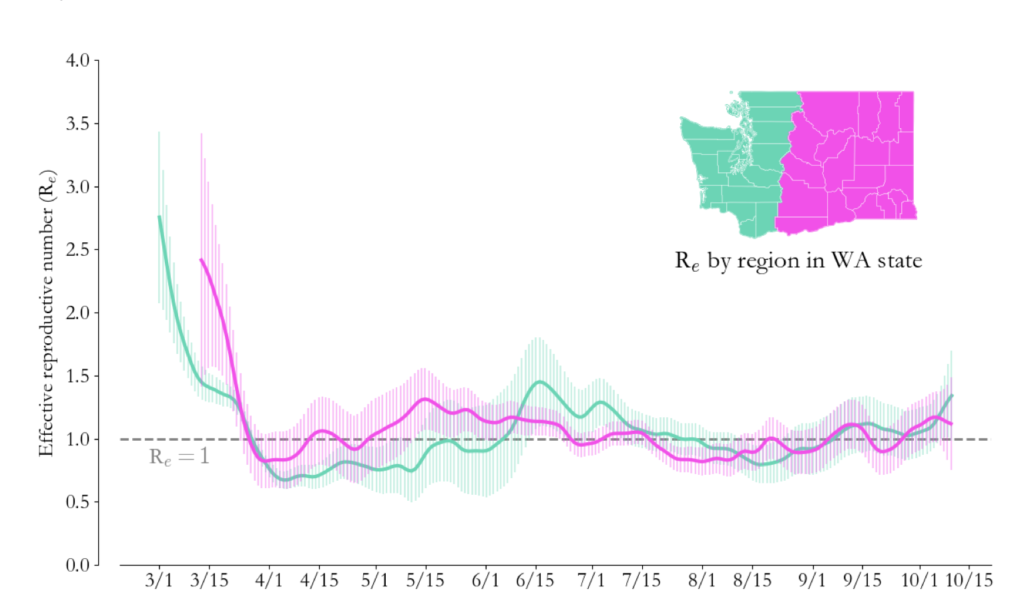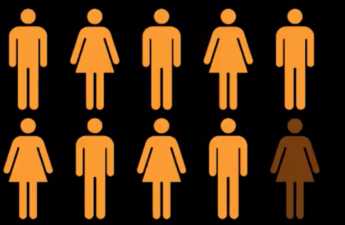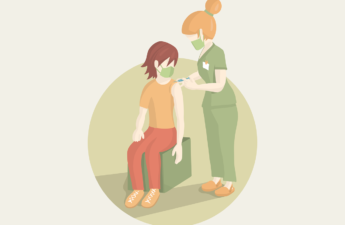Western Washington is seeing a surge in new COVID-19 cases similar to that seen in much of the rest of the country, with King, Snohomish and Pierce counties are now considered to be “hot zones” of disease transmission, Washington State Department of Health officials said Saturday.
Last week, for the first time since mid-summer, the number new cases reported statewide topped 1,000 a day. By last Wednesday, the number climbed to 1,454 a day, and today the total hit 1,777 a day.

“COVID-19 is currently spreading very quickly in Washington state,” said Secretary of Health John Wiesman. “We are very concerned that disease transmission will only grow over the next few weeks with the holidays coming up.
“The threat to overwhelming not just our hospital systems, but our ability to do contact tracing, is real. We need everyone in Washington state to take action now to stop the spread,” he said.
Last Wednesday, the U.S. reported more than 100,000 cases for the first time, the following day more than 116,000 cases and 130,000 cases on Friday. Since the beginning of the pandemic, nearly 250,000 Americans have died of the disease.
Washington state officials said the new surge in infections, which started in September, would likely worsen as winter approaches and people spend more time together indoors and gather for the holidays.
“We are all tired and want to spend time with loved ones during the holidays and continue progress toward safely reopening schools, said said Washington Deputy Secretary of Health for COVID-19 Response Lacy Fehrenbach, “but high community rates increase the risk of every single activity we do, and unfortunately, the virus does not get tired or take holidays.”
“We are all tired and want to spend time with loved ones during the holidays and continue progress toward safely reopening schools,” Fehrenbach said, “but high community rates increase the risk of every single activity we do, and unfortunately, the virus does not get tired or take holidays.
We know what works to reduce the spread of COVID-19 and we’ve flattened our curve before. We must push through the fatigue and redouble our efforts to contain the virus,” she said.
State officials people take the following steps to reduce the spread of the diseases:
- Limit in-person gatherings as much as you can. That means reducing the number of times you gather, how many people attend and how long you spend together. Gather outside if possible, or open windows and doors to maximize ventilation inside.
- Always wear a face covering when you’re around people who don’t live with you. This includes close friends and family. It may feel awkward to do this around people we know well and trust, but many people get COVID-19 from someone who doesn’t have symptoms yet. Even if you’re keeping some physical distance, it’s still a good idea to wear a face covering.
- Talk to your family and friends about alternate ways to celebrate the holidays. Brainstorm ideas for virtual celebrations so you can still enjoy spending time together without putting each other at risk.
- Make a safety plan for in-person gatherings. Have a conversation with your family and friends about what you’re going to do to reduce risk of spreading COVID-19 when you gather.
- Stay home if you’re sick or have been exposed to COVID-19. If you’re feeling a little under the weather but aren’t sure if you’re getting sick, take the cautious approach and protect others by staying home.
- Keep up your good hygiene habits. Wash or sanitize your hands often and avoid touching your face.
More information about COVID-19 can be found on the DOH website and in the state’s risk assessment dashboard. Additional resources for the holidays are available at coronavirus.wa.gov/gatherings.


